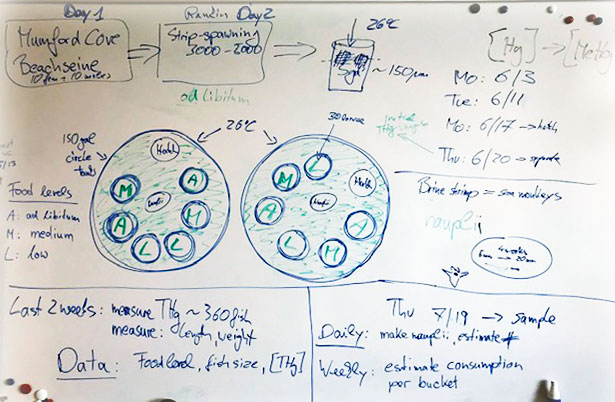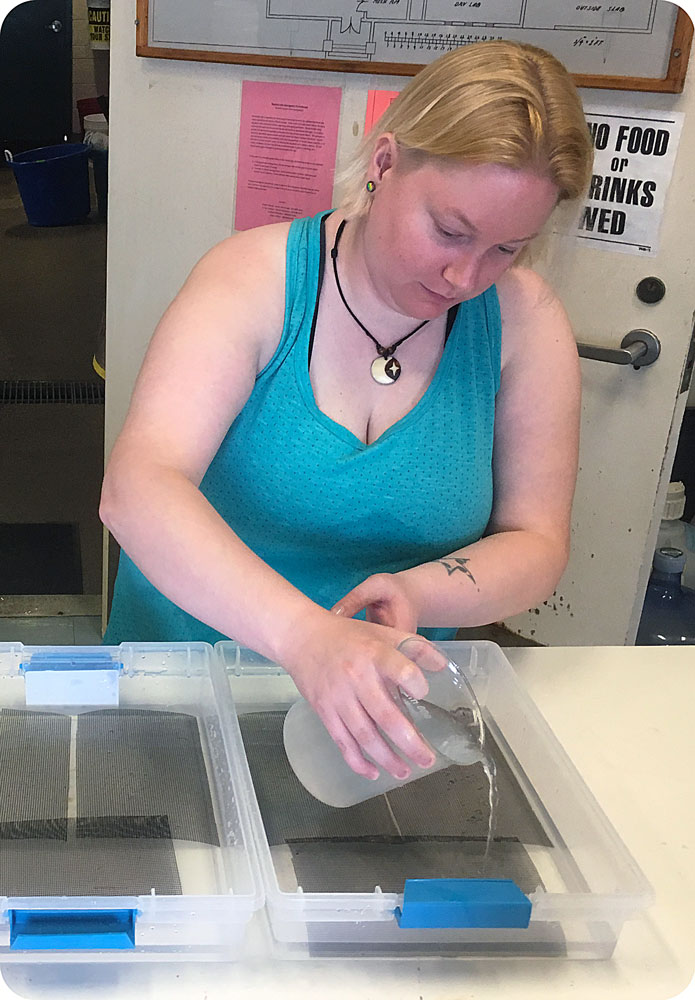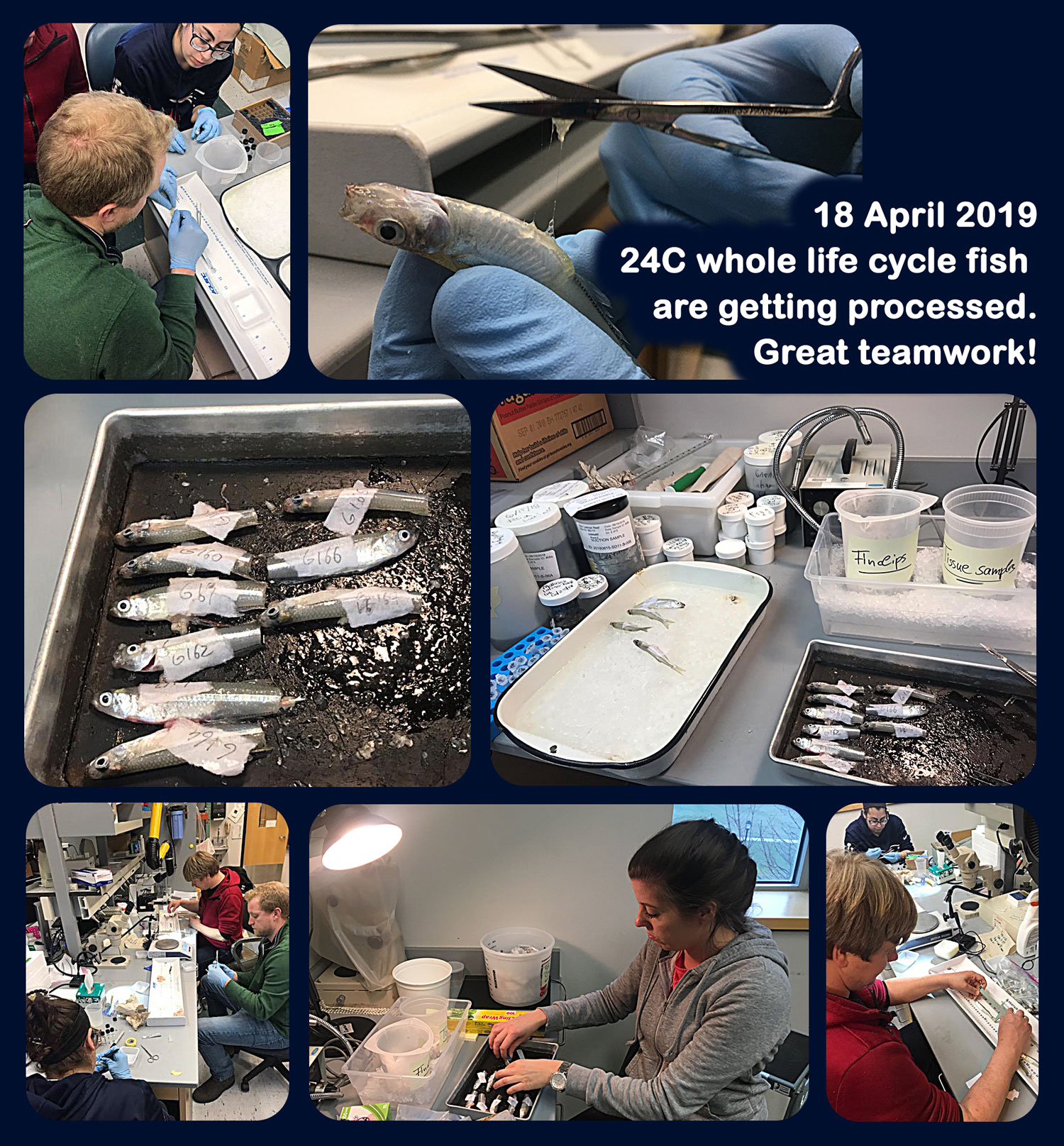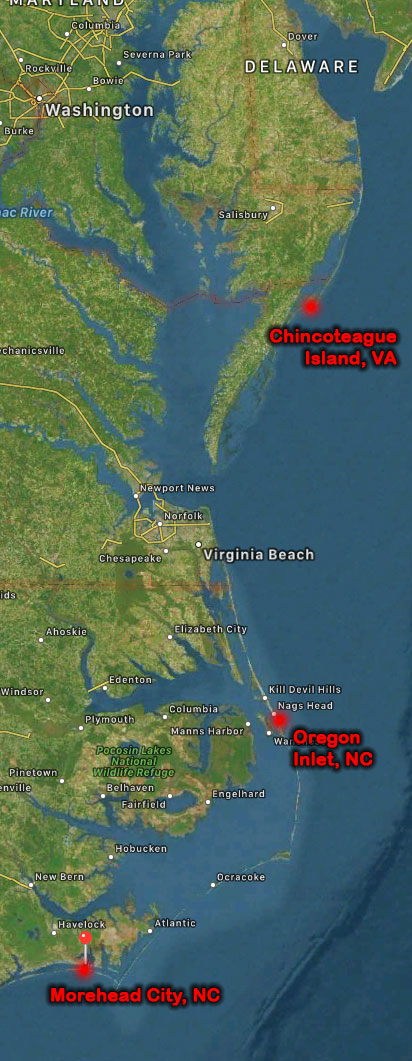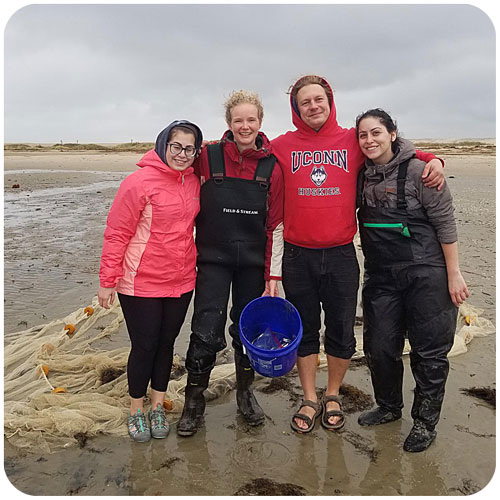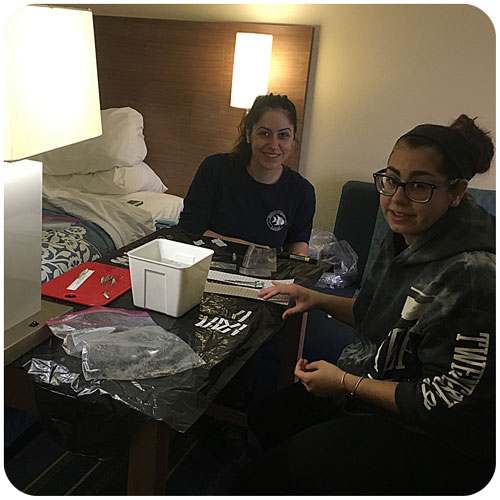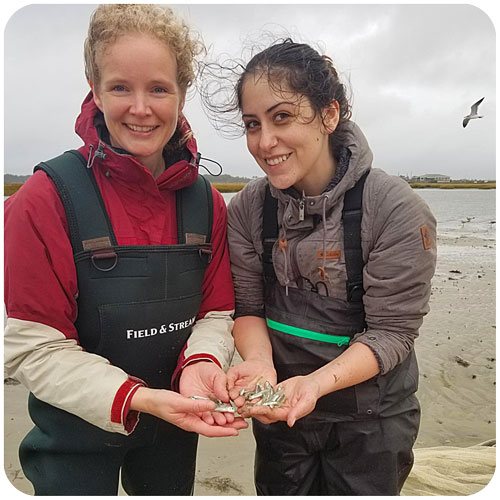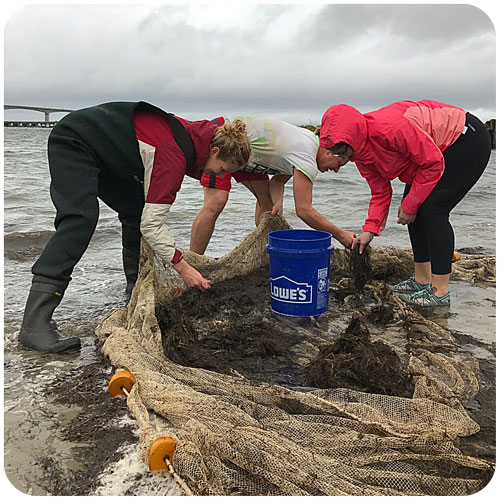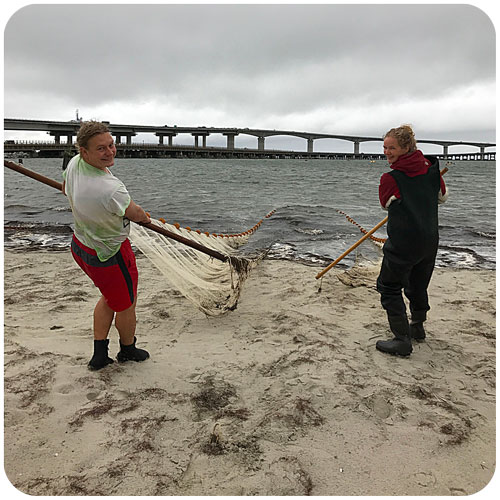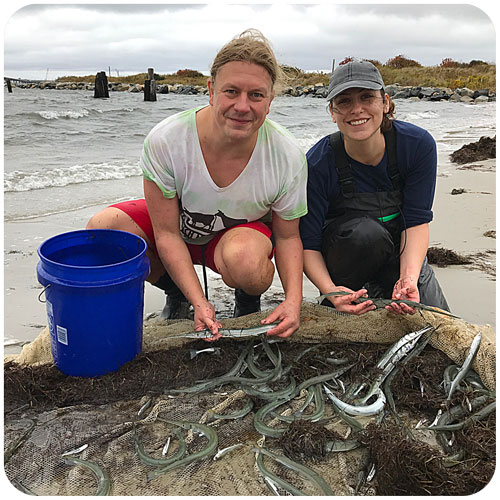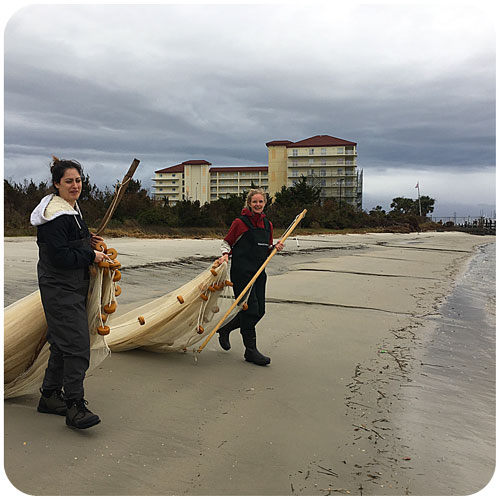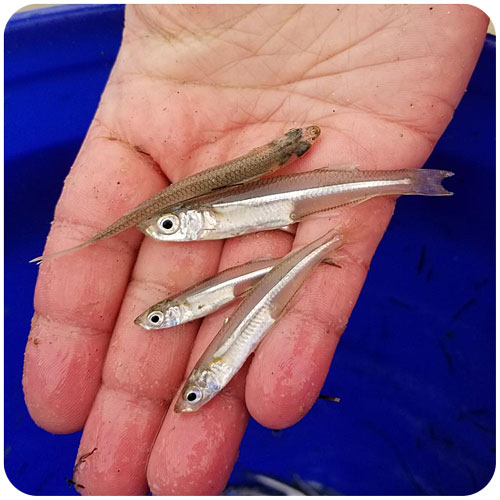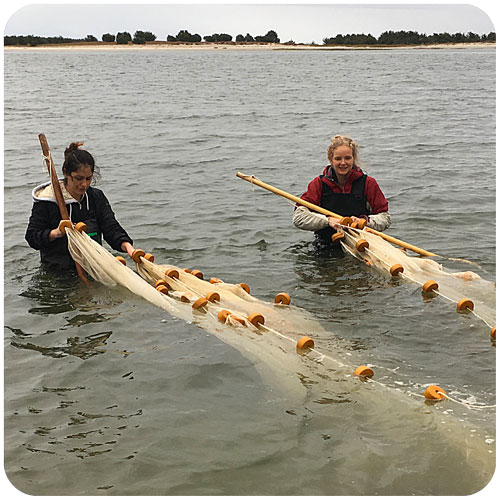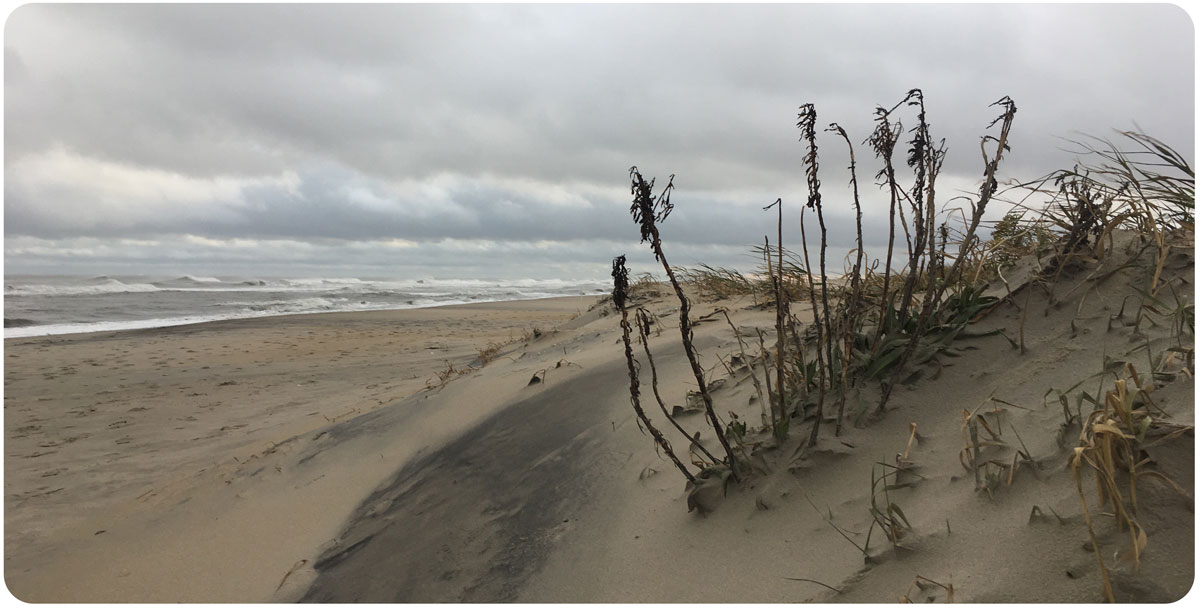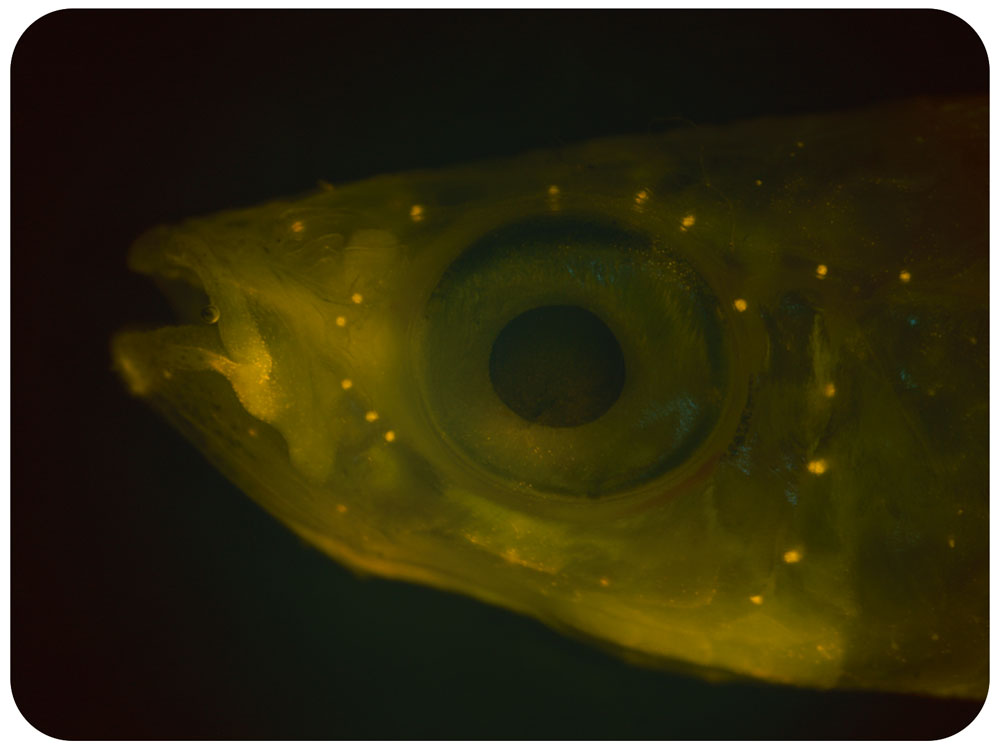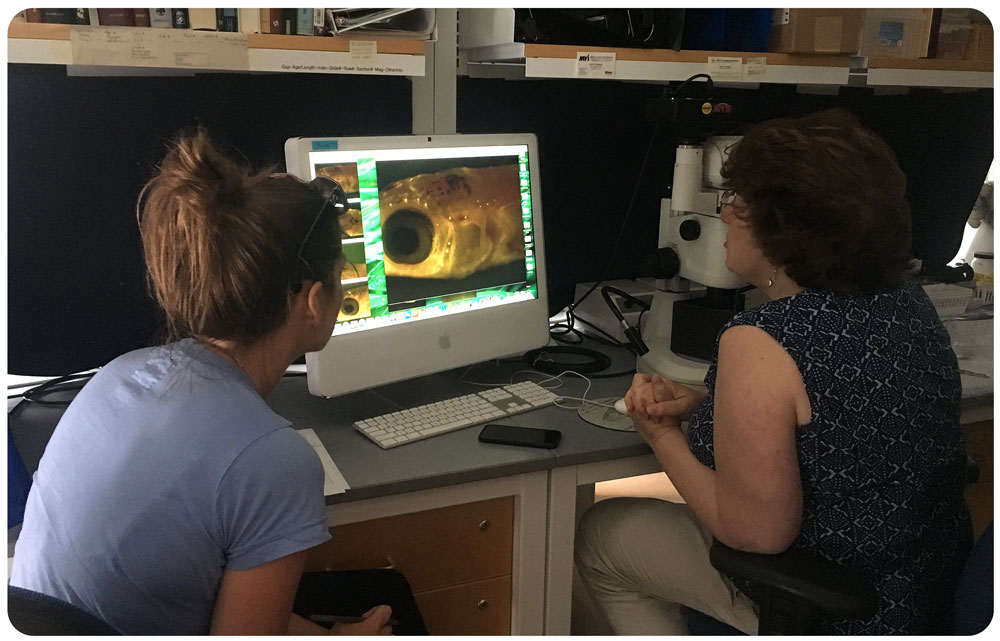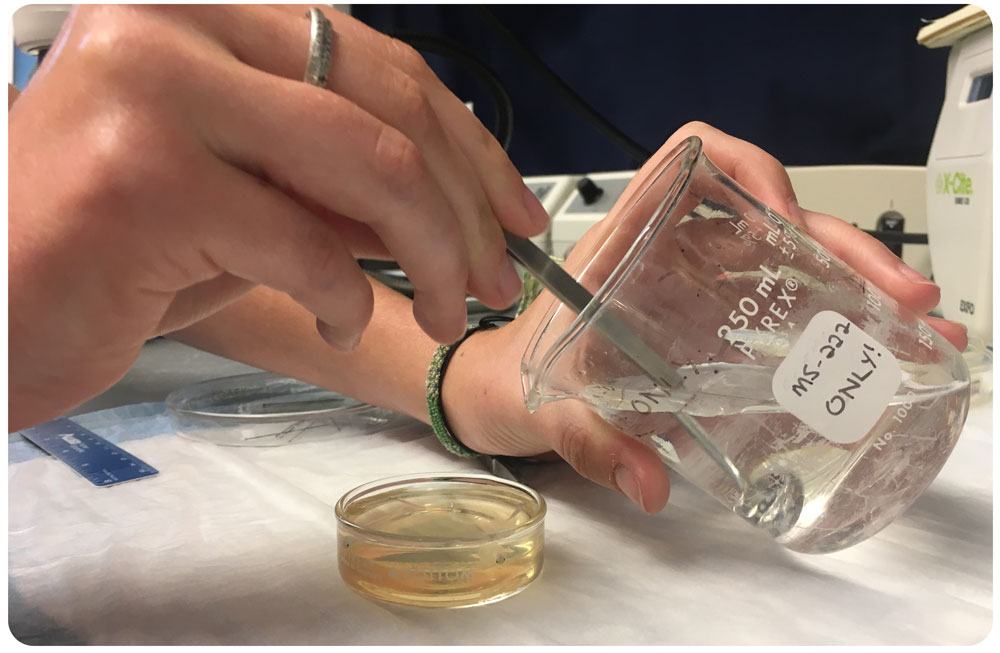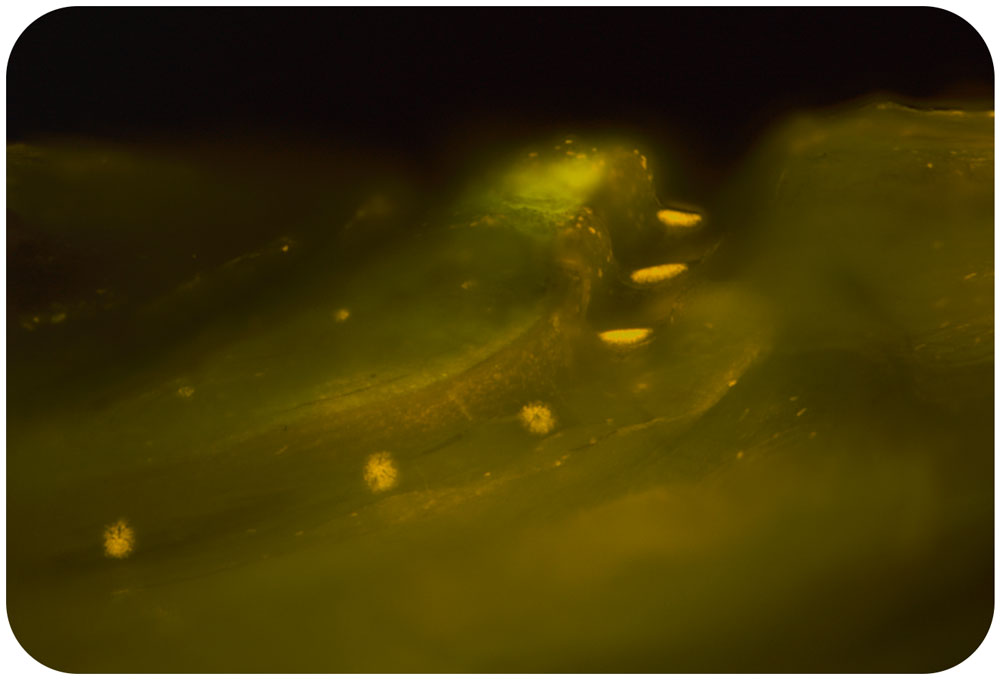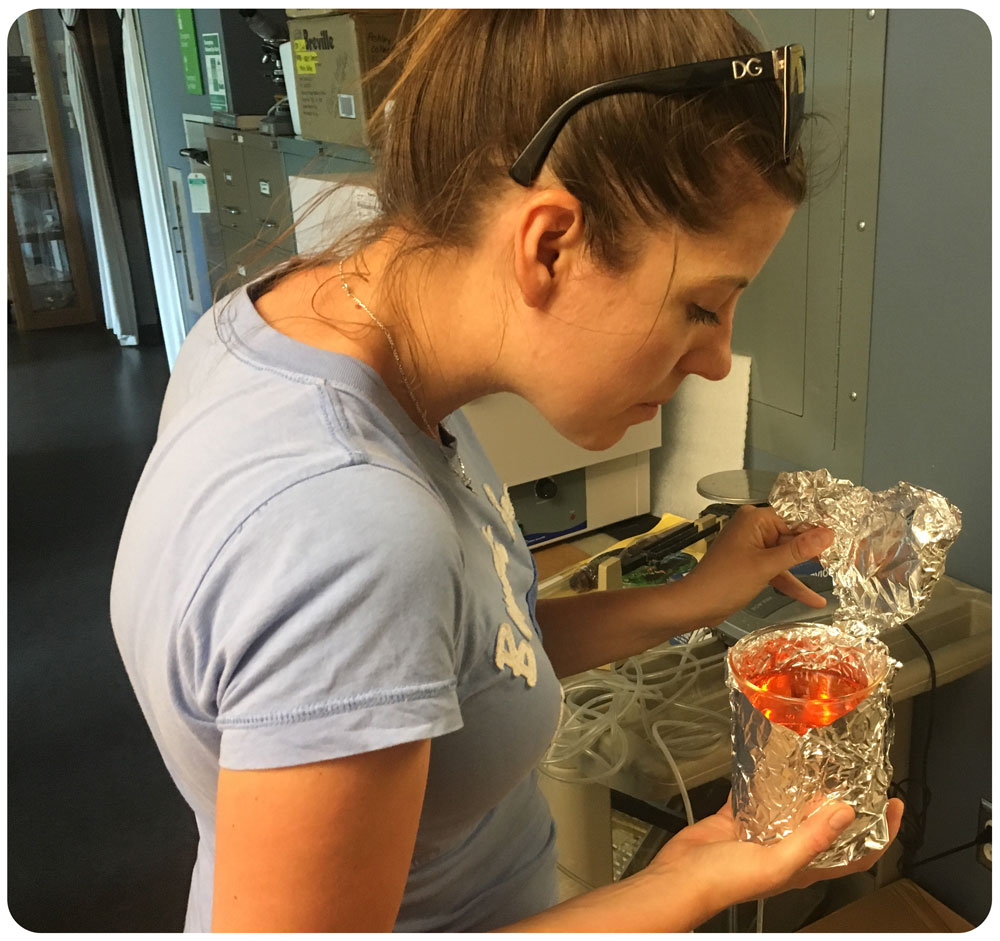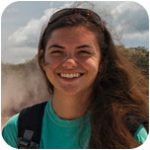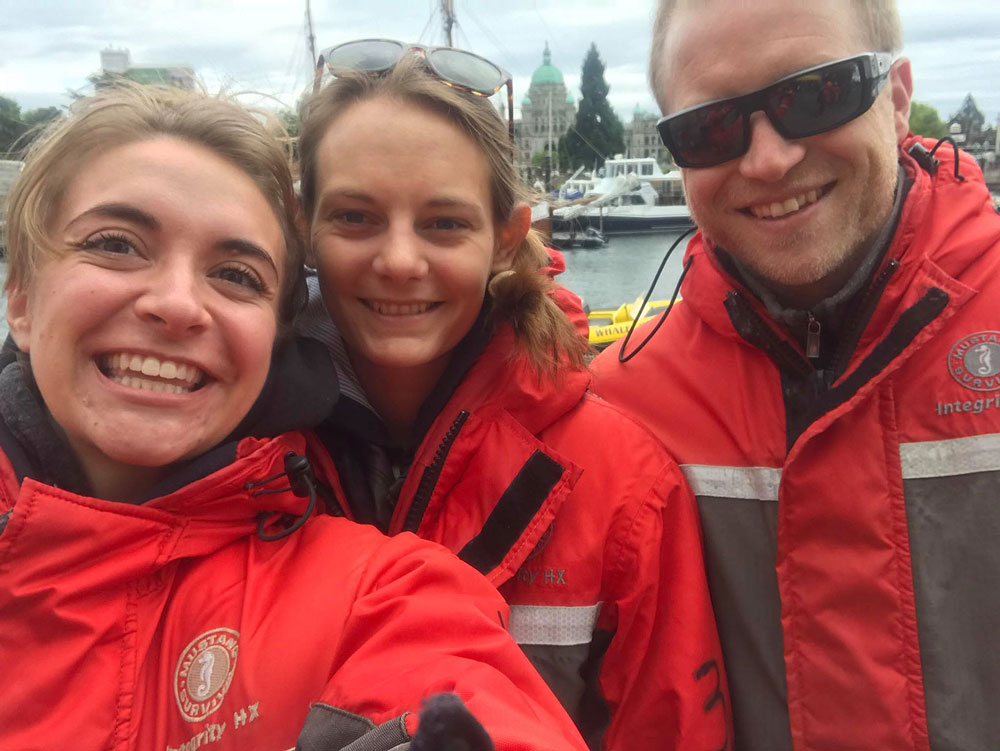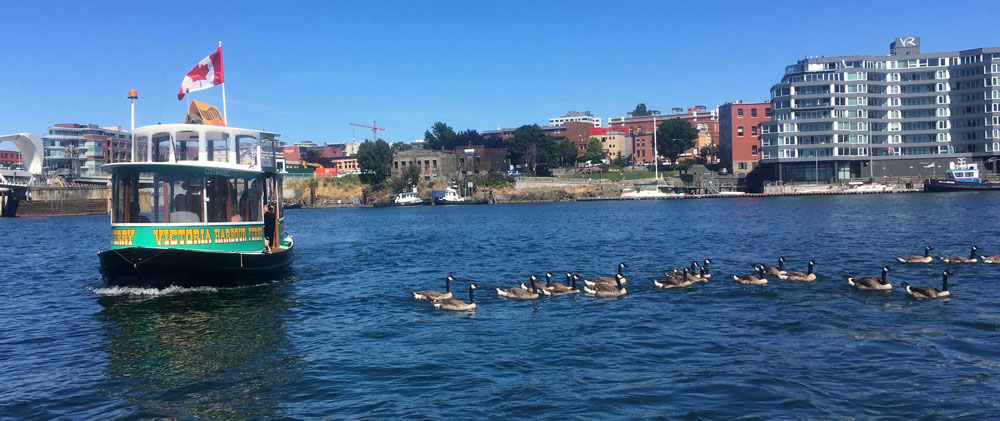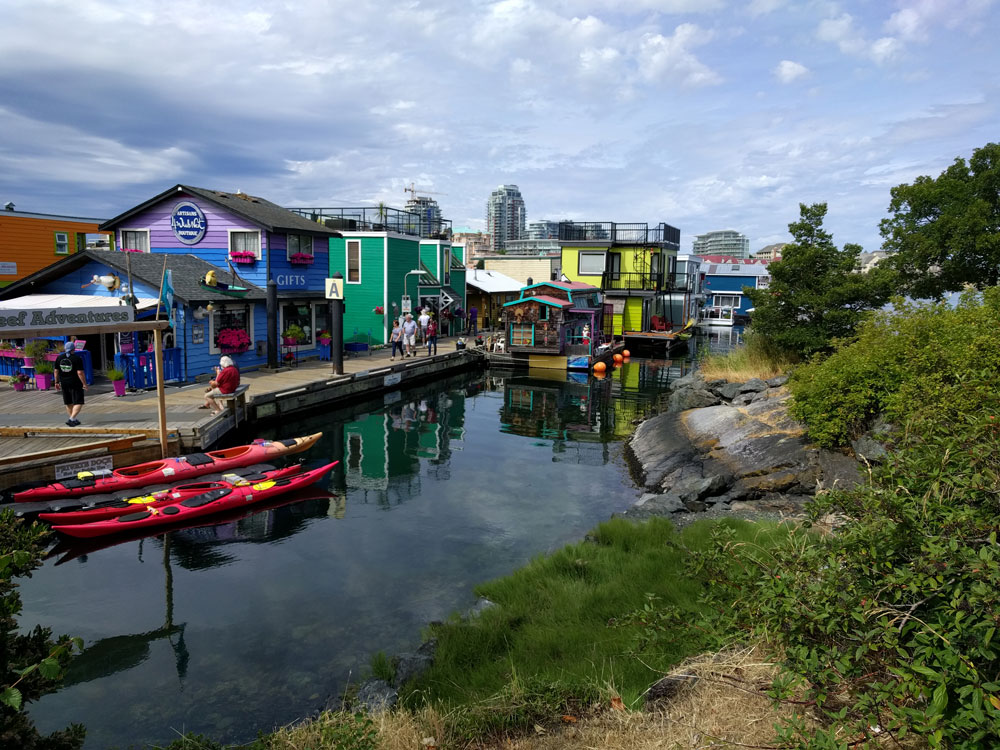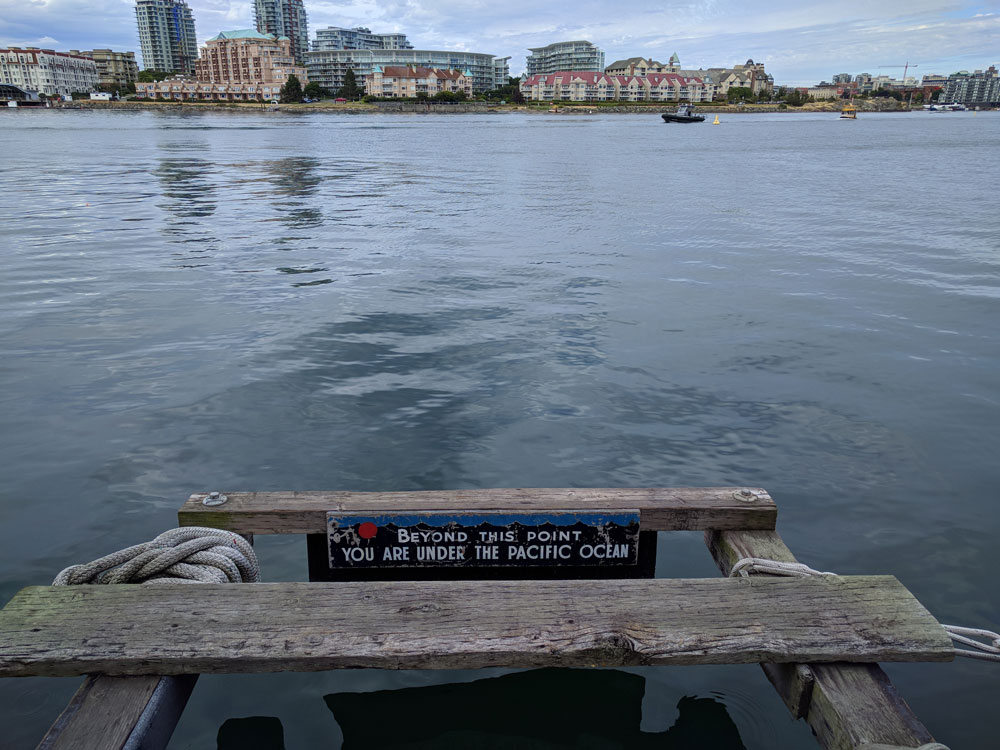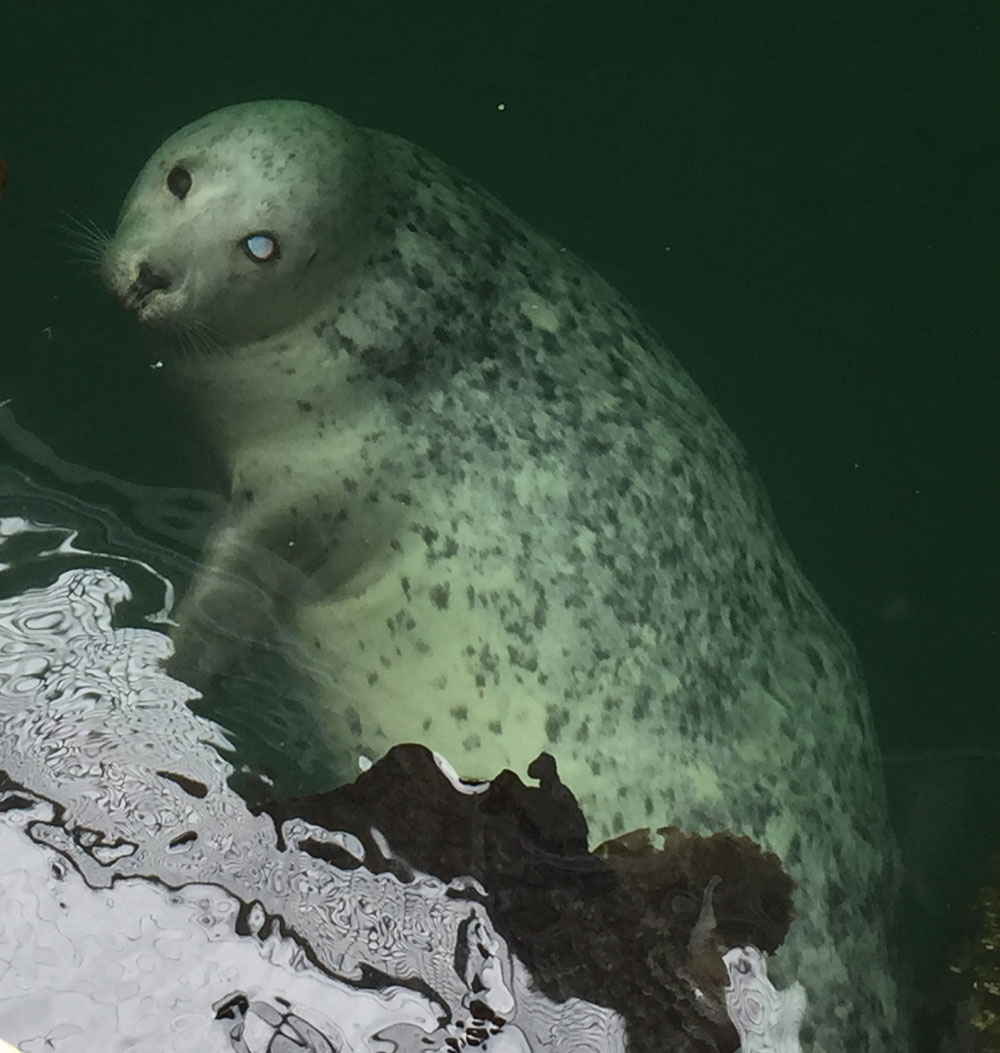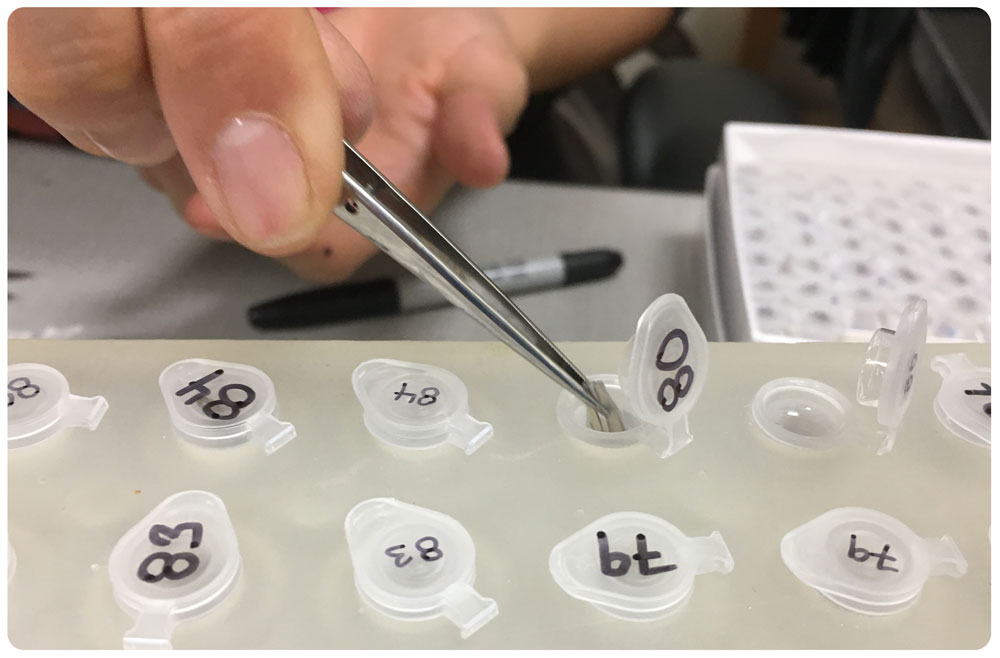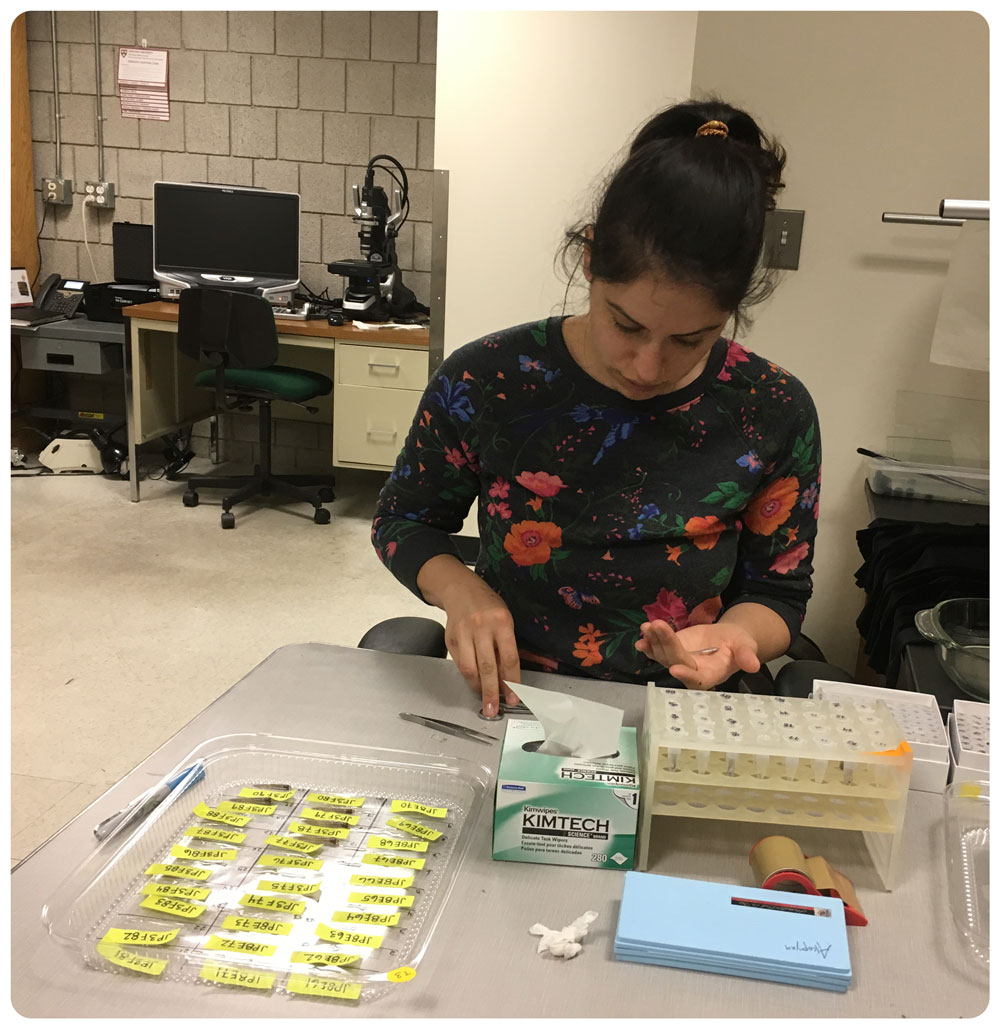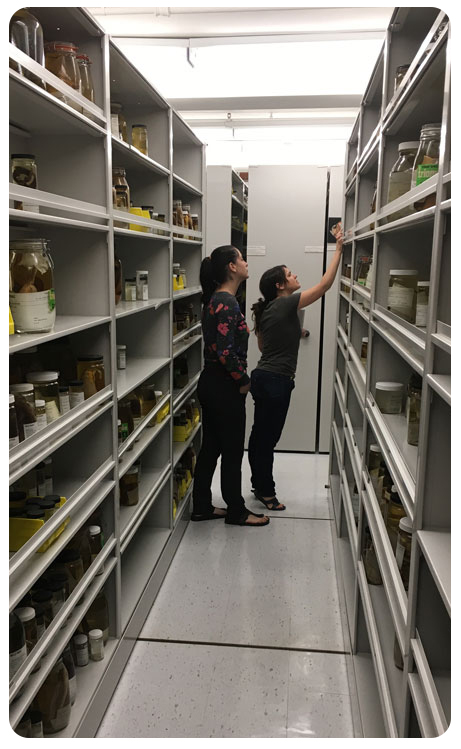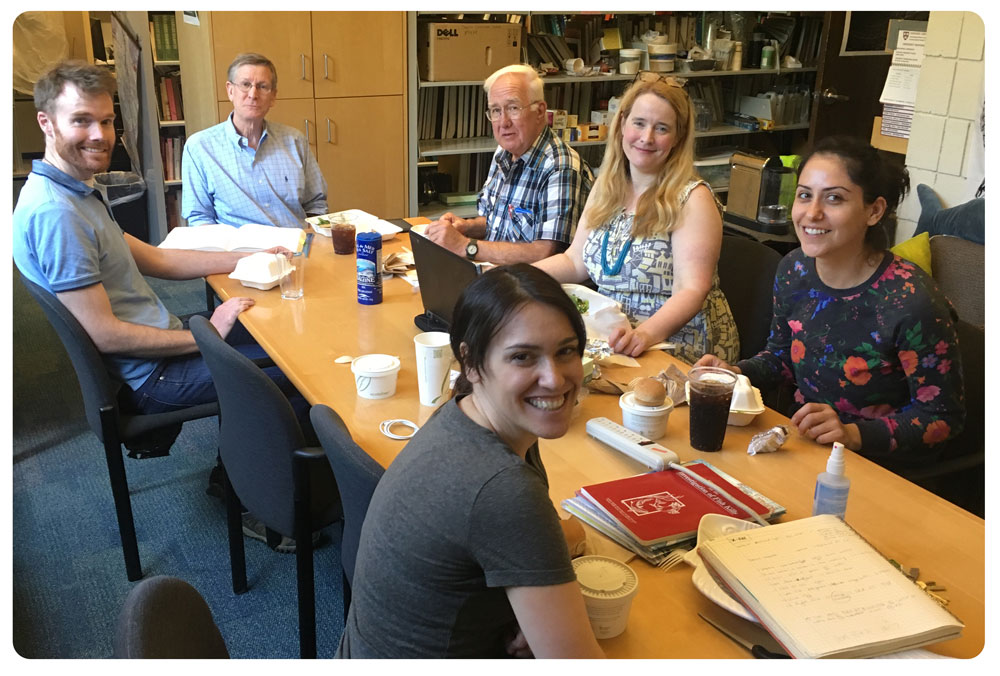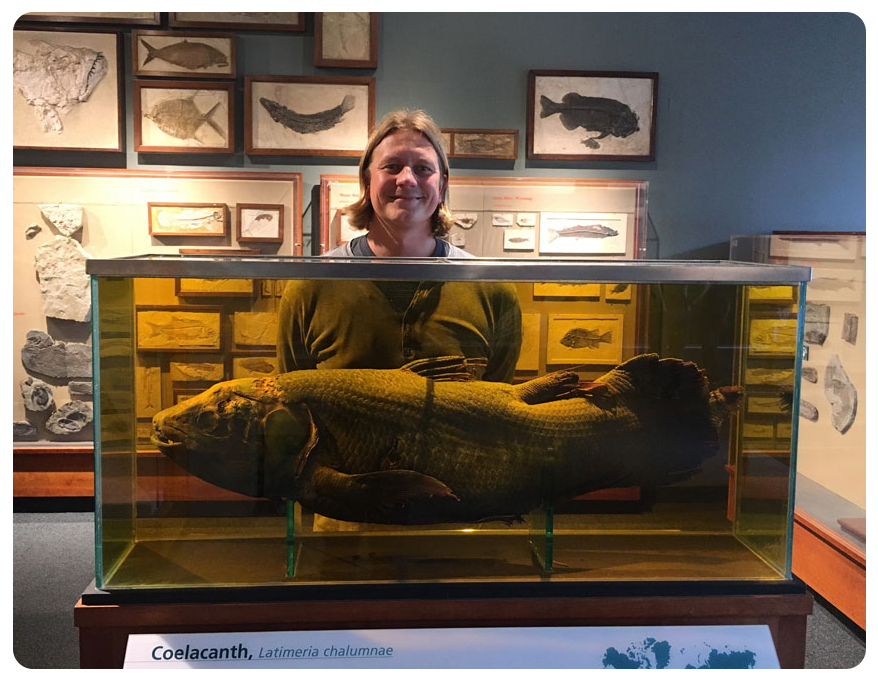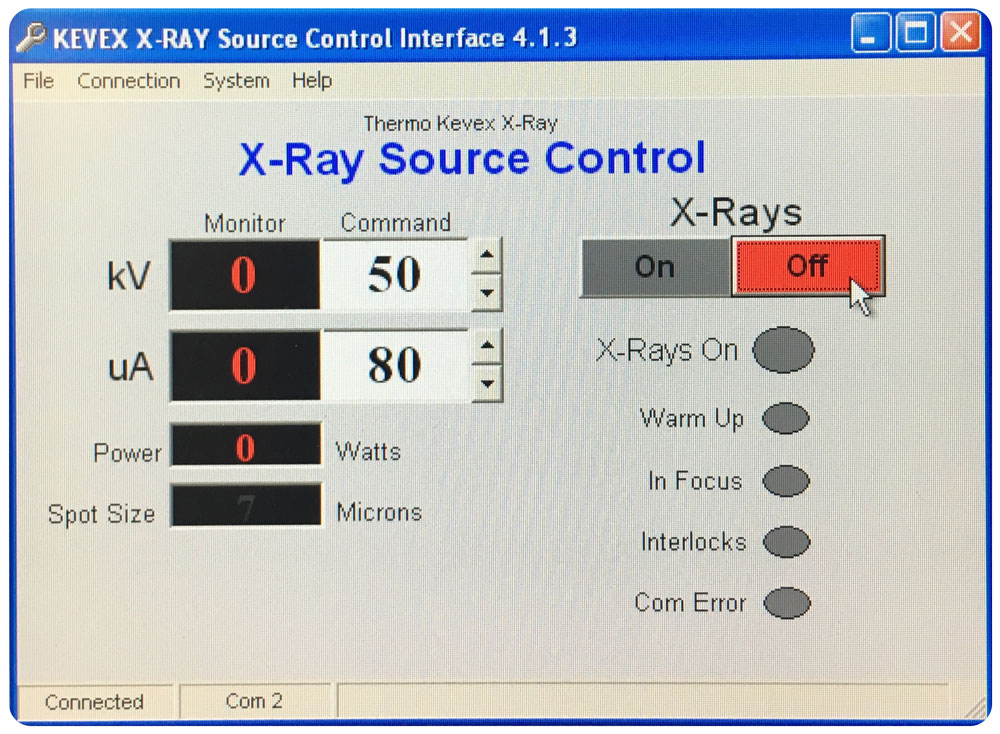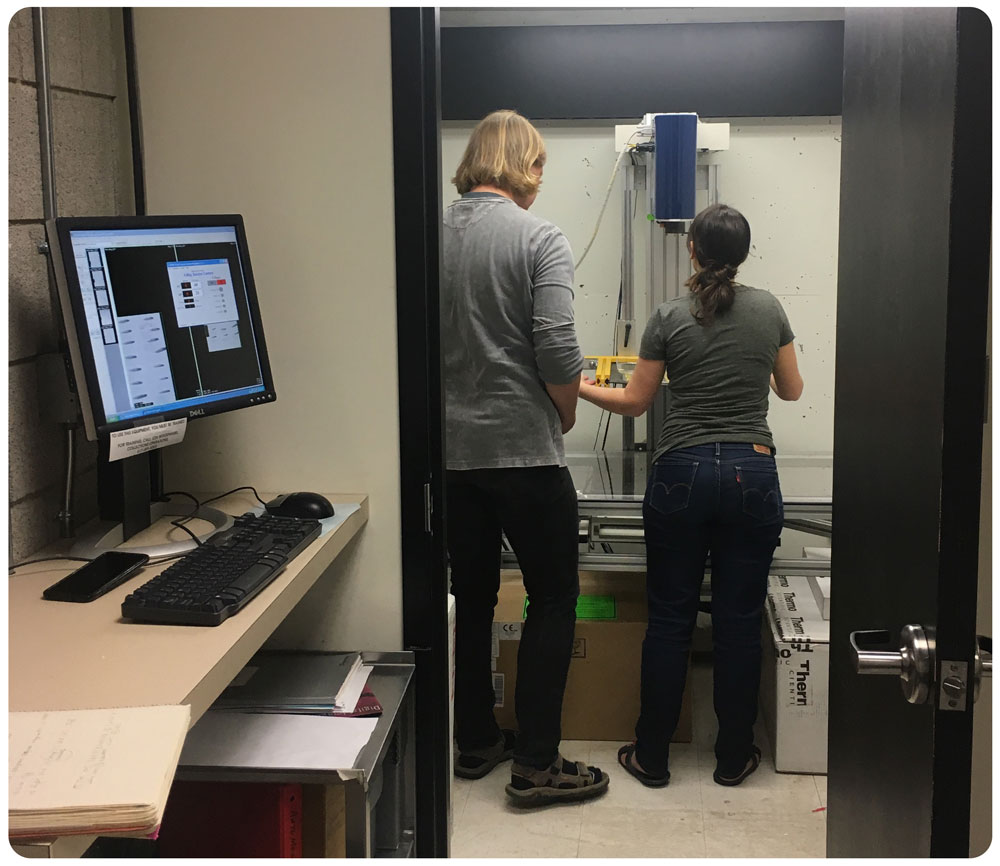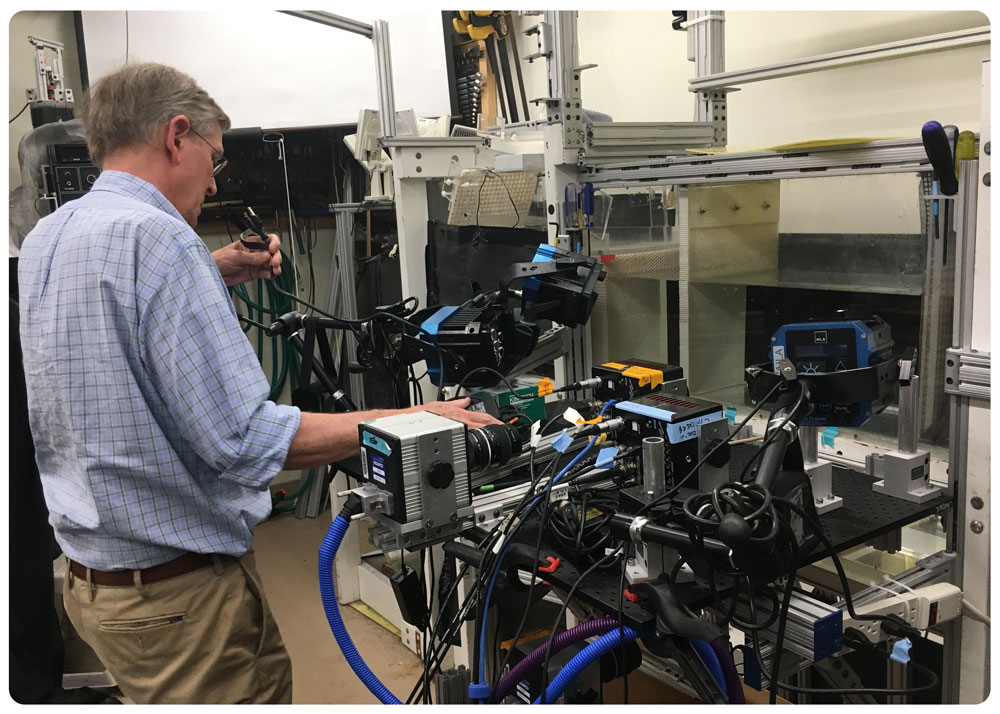[Atlantic silverside, Menidia menidia, mercury, ingestion rates]
dbellio2@asu.edu
Atlantic Silverside
[Lab news] Emma turns 30 and starts a new silverside experiment!
Like in our previous experiments, we are mimicking current and future coastal environments that fluctuate daily in CO2 and oxygen levels – thanks to our computer-controlled system that manipulates these levels in up to nine tanks simultaneously.
But this time, our additional goal is to keep track of sib-ship. We produced full sibs (same mother, same father), half-sibs (same mother or father, different father or mother) and unrelated individuals, and by keeping them separate we will later be able to calculate additive genetic variances in the various traits under different conditions (i.e., heritability) and examine trait correlations.
As usual, this could not be done by one person, so the entire lab helped preparing, seining, and fertilizing embryos on this frantic day. Great job all!




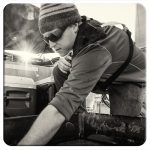
[Lab news] Whole life cycle CO2 fish are getting sampled
18 April 2019. This Thursday was a long day in the Baumann lab, because we sampled and processed over 200 adult silversides from a unique experiment. These fish were fertilized in the lab and reared from eggs to adulthood under different temperatures and contrasting CO2 conditions. We are interested to see, if future ocean conditions have measurable effects on this species fecundity, growth, and oocyte characteristics. We also took tissue and genetic samples, with an effective line-up of hands, i.e., Hannes, Emma, Chris, Callie and Lucas.
Good teamwork all!
[Publication] Meta-analysis of silverside CO2 experiments published!
The study demonstrated:
- A general tolerance of Atlantic silverside early life stages to pCO2 levels of ~2,000 µatm
- A significant overall CO2 induced reduction of embryo and overall survival by -9% and -13%, respectively
- The seasonal change in early life CO2 sensitivity in this species
- The value of serial experimentation to detect and robustly estimate CO2 effects in marine organisms
Baumann, H., Cross, E.L., and Murray, C.S. Robust quantification of fish early life CO2 sensitivities via serial experimentation. Biology Letters 14:20180408

[Lab news] Baumann & Therkildsen lab on a silverside road trip
What a great collaboration. Check out some of the pictures from the trip below.
[Research news] Live staining of silverside neuromasts at URI
This technique involves placing live fish in a fluorescent mitrochondrial stain for 5 minutes before imaging different areas of the fish under a dissecting microscope equipped with an epiflourescence light source. This allowed us to visualize small sense organs called neuromasts located in tubular canals in the head, trunk and tail, which form the fish sensory lateral line system used to detect water flows.
[New publication] Complex CO2 x temperature effects in Menidia offspring
Congrats, Chris, to the second chapter published!
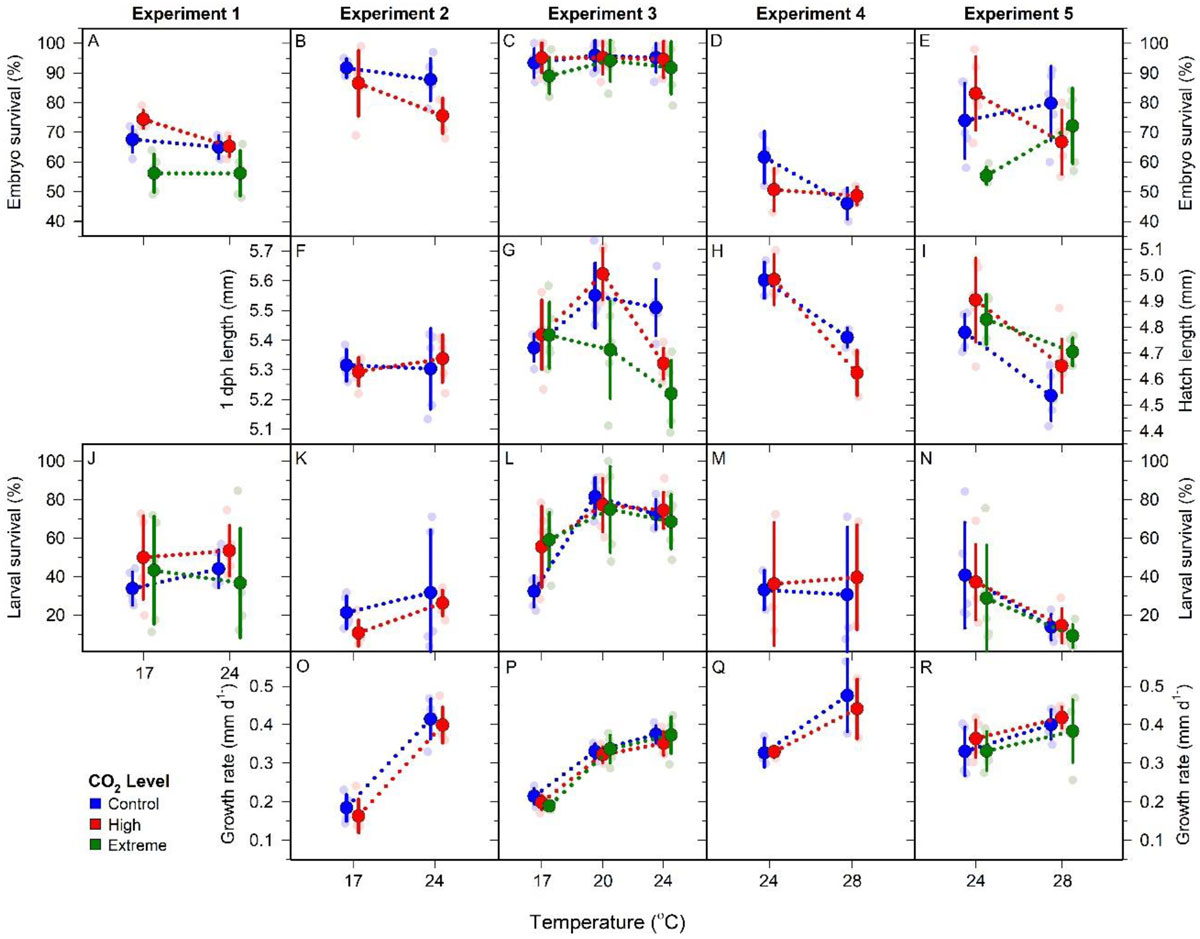
[Lab news] Baumann lab attends the Larval Fish Conference in Victoria
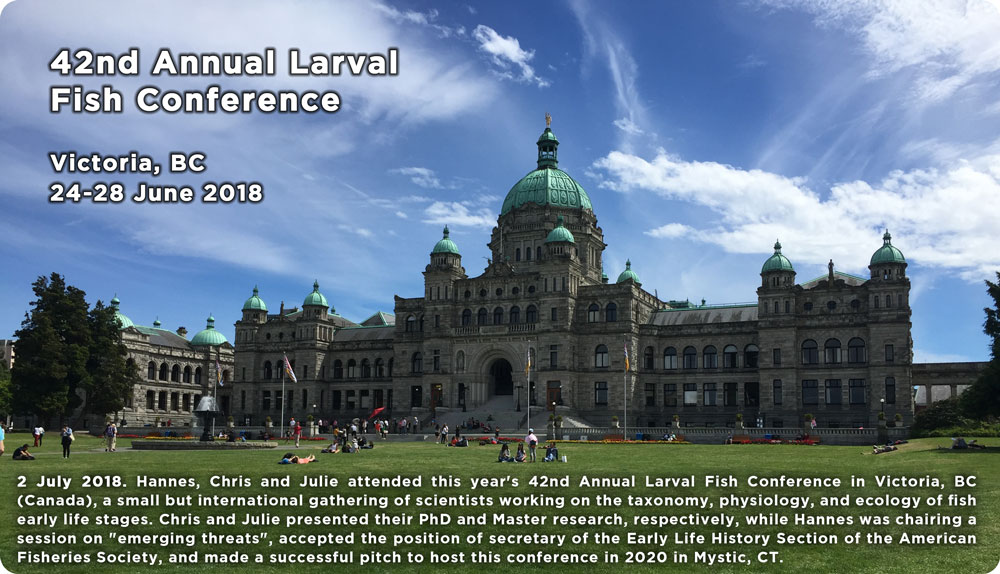
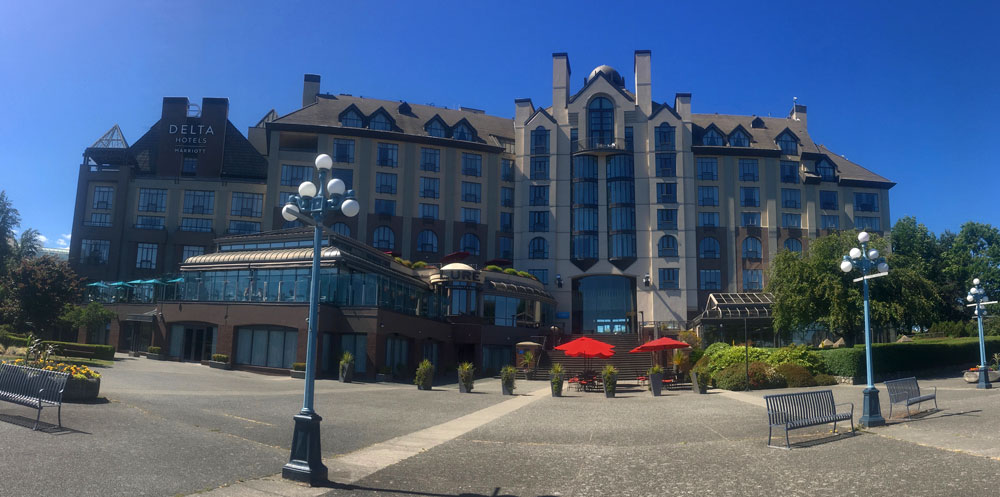
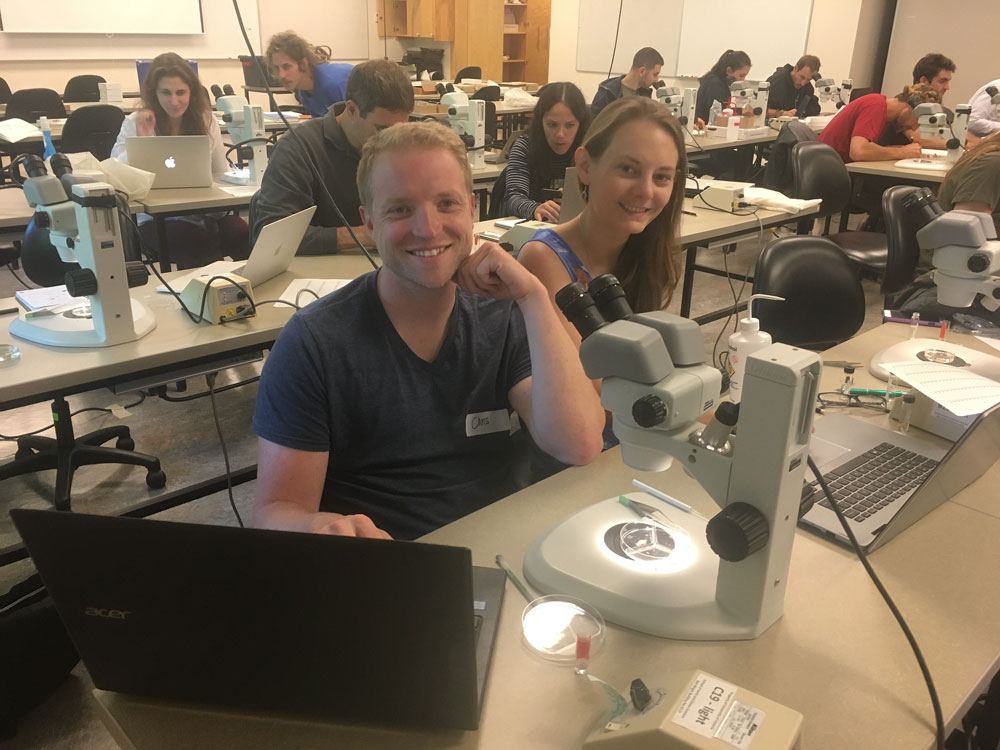
Ever since attending the American Fisheries Society conference in 2014, I’ve wanted to go to another fish-focused conference. I was lucky enough to attend the 42nd annual Larval Fish Conference this year in Victoria, British Columbia, and it surpassed all my expectations. The week started off with a larval fish identification workshop where we got to learn techniques from renowned larval fish experts (and see some really cool fish larvae!). The talks were impressive and thought-provoking, providing many new ideas for research and how to give an engaging talk. My favorite part was meeting all the larval fish ecologists whose publications I’ve been reading for my thesis. I spent most of my evenings exploring Victoria with other grad students attending the conference and left with many new friends from institutes all over the world! The trip ended with a whale watch, where we saw a pod of 5 Orcas. Overall, the Larval Fish Conference was a great experience that I hope to someday attend again!
Oral presentations:
- Pringle, J. and Baumann, H. Sex-specific growth and mortality patterns in juvenile Atlantic silversides (Menidia menidia) from Connecticut waters. Talk. 42nd Larval Fish Conference, Victoria, BC, Canada 24-28 June 2018
- Murray, C.S., Wiley, D., and Baumann, H. Early life stages of the northern sand lance Ammodytes dubius show high sensitivity to acidification and warming in a CO2 × temperature factorial experiment. Talk. 42nd Larval Fish Conference, Victoria, BC, Canada 24-28 June 2018
[Lab video] How a new silverside experiment starts
29 June 2018. A new experiment with Atlantic silversides (Menidia menidia) starts and as usual, it’s an all hand on deck operation. This time, we have Chris Tsang shadowing all of us and Emma professionally explaining the process.
Have a look for yourself!
[Research news] A day at Harvards MCZ
The 282 fish are now split in a DNA sample for extraction and a body sample for further trait measurements.

